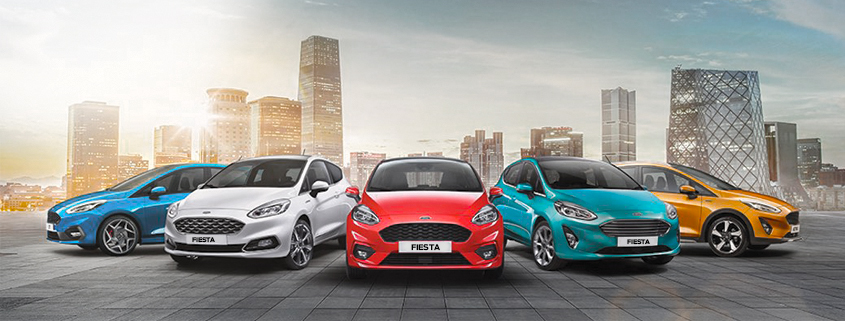4 Problems Everyone Has With Vehicle Colors
Henry Ford might have said you can have it in any color you want as long as it is black, but that is not the case; you can choose from a range of colors and finishes that you prefer, but here are 4 problems everyone has with vehicle colors.
Favorite color
Everyone has their favorite color, a color they identify themselves with because of their personality or culture.
Choosing a color for a vehicle is even more complex as it can also reflect how a person feels about themselves, what they think they would like to feel about themselves, and how they imagine themselves while driving a car.
The color you choose will affect your vehicle in many ways; read on to find out what these are.
How car manufacturers choose their colors
At Ford, the developers choose colors after months of research, finding colors that inspire them at fairs, shows and on their travels.
Once the color is created, the color is named. Platinum White, Race Red or Shadow Black – names are designed to bring out feelings, and describe the vehicle.
It might seem obvious that you choose the color you like when selecting a vehicle, but there is more to it that meets the eye.
Choosing a color for your car is a very personal thing but maybe before you choose that sparkling pink, think about the value it is actually adding or taking away from your resale value, maintenance and visibility of the vehicle.
The right finish
There are four types of finishes that a vehicle comes in:
- Solid -this is a basic, solid color that doesn’t cost extra. Colors usually are white, red, blue or black. The solid paint is applied followed by a lacquer or clear coat that protects the paint from weather, scratches, and stones. This type of vehicle paint can be repaired relatively cheaply and easily.
- Metallic – this paint finish is a solid paint that is added with aluminum powder to give it that metallic shine. Manufacturers charge more for a metallic vehicle as this type of paint requires multiple coats of paint and lacquer. A metallic paint will also hide minor scratches and chips, but it is more difficult to match the color when damaged.
- Pearlescent – ceramic crystals (also referred to as mica) are added to this type of finish that gives it a sparkle. This raises the cost of the finish and the repair.
- Matte – is an opaque paint technique that uses solid paint with a high epoxy content primer coat, a high PVC content in the paint coat itself or a flattening agent in the clear lacquer coat to achieve the dull effect. It is difficult to apply and remove any scratches or chips.
With this in mind, now find out what the problems are that everyone has with vehicle colors.
The problems that everyone has with vehicle colors
The first problem that everyone has with the color of a vehicle is the cost.
- Cost
If you choose any other finish than a solid color, you will pay more – when buying the vehicle, and maintaining it. As previously mentioned, choosing a metallic, pearlescent or matte finish will cost more. If you don’t want to spend any more on a vehicle, choose a solid color. Some of these will also cost you less when it comes to maintenance.
- Maintenance
Some colors are easier to keep clean than others. For example, white, silver and grey colors hide dirt and dust better than others. Scratches are more noticeable on black, red or some metallic or pearlescent vehicles, in addition to dirt and dust. To match in a white door on a white vehicle is easier than matching in a faded red one.
- Visibility
Safe colors, or colors that are more visible on the road, are white, gold and yellow. These colors stand out against other cars in traffic, the road and scenery. High-risk colors are silver, grey, black, blue, red and green as these colors have low visibility on the road.Black cars, according to the Monash University Accident Research Centre (MUARC) study, are up to 47% more likely to be involved in crashes between dawn and dusk, and up to 12% more accident-prone than white vehicles during daylight hours.If you currently drive a vehicle in one of those low visibility colors, drive carefully, turn on your headlights and be safe while driving.
- Resale
The color of your vehicle most definitely influences the resale value. Bright colored vehicles in yellow, purple or orange will take longer to sell than your solid, neutral paint colors. If someone can’t find the color they are looking for, they will either change brands or wait.Don’t be tempted by the maroon, turquoise or green vehicle either; but if you hold on long enough they might just come back into fashion.
What color should you choose?
The two most popular car colors in Thailand are white and black.
Top three popular colors in the US for all vehicle categories are silver, white and black.
The popular colors for SUVs, Minivans and light trucks are:
- White
- Silver
- Black
- Dark Blue
- Dark Grey
If you are buying a car new, then you have a choice in the color of the vehicle – if you buy a second-hand vehicle your choices are limited.
Maybe you would like to buy a vehicle in a safe color, or maybe you will choose a color because you will get noticed. Or maybe you will choose a color that you love and not worry about the implications of resale and maintenance.
However you choose your vehicle color, make sure that you will always be happy with your purchase.
Sources



